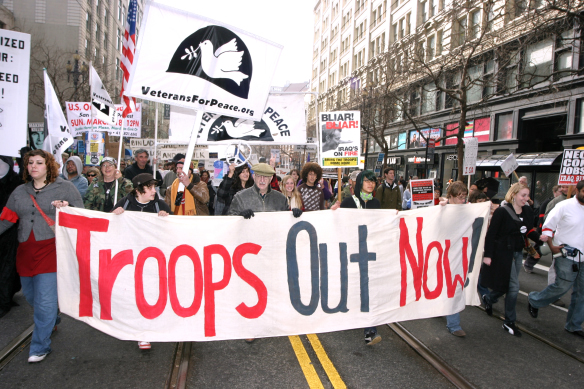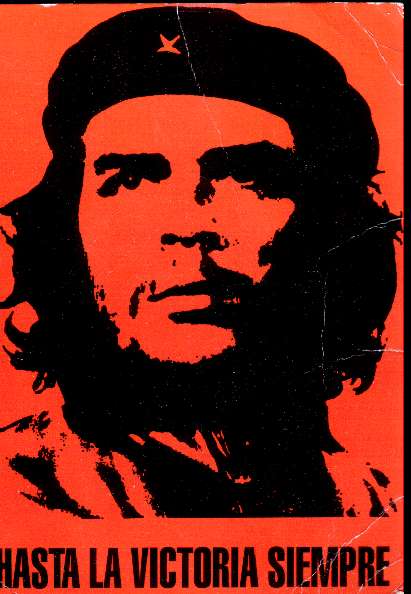 Revolt from below, not intervention from the West, is the key to overthrowing Burma's military junta, writes Giles Ji Ungpakorn
Revolt from below, not intervention from the West, is the key to overthrowing Burma's military junta, writes Giles Ji UngpakornThe mainstream media concentrates on the pronouncements of foreign governments and the supposed role of the United Nations in stopping the bloodshed perpetrated by the Burmese military junta.
But the real struggle is on the streets and in the cities across Burma. The idea that the Chinese government, responsible for the Tiananmen Square massacre, will somehow restrain the Burmese military is laughable.
As for the West, it has a long history of supporting military juntas in South East Asia and never lifted a finger to stop massacres in Indonesia or the Philippines.
In fact the recent demonstrations in Burma arise out of a realisation by the country's democracy activists that they cannot rely on Western powers or anyone else to bring about a change – they have to act themselves.
The last great uprising in Burma was the so called 8888 movement that started on 8 August 1988. It was initiated by student protests over economic issues but soon developed into demands for democracy (see below).
For years after the defeat of that uprising, demoralised activists had hoped the US would pressurise the Burmese junta into releasing opposition leader Aung San Suu Kyi and negotiating a road map to democracy.
But lessons have since been learnt. Earlier this year a loose network of activists decided to start open protests in the form of "prayer marches" at temples. This was followed by the large demonstrations of monks after fuel price rises of 500 percent.
Thousands of ordinary people gained confidence and joined the monks' protests. Hundreds of politicised young men have become monks in recent years, partly due to the fact that the junta closed down or restricted entry to colleges and universities.
The temples were safer places for people to gather and talk, much like the mosques during Iran's 1979 revolution or the Catholic church in Communist Poland before the uprising there.
The pro-democracy movement today has more experience than in 1988. Twenty years ago it was prepared to allow Suu Kyi and her party, the National League for Democracy (NLD), to lead the movement.
Today there are more debates about the way forward. While everyone agrees that Suu Kyi and all political prisoners should be freed immediately, the radicals are wary of leaving the leadership of the movement in the hands of the NLD.
While many of the current activists trace their roots back to 1988, thousands of young people on the protests are too young to have taken part back then. This means that a whole new generation of people have become radicalised.
There are signs that they are prepared to resist the army with great courage and sacrifices. And democracy can only be achieved by overthrowing the junta.
This will involve fighting back – and also winning over ordinary soldiers to the side of the people.
The movement needs to deal with the long running ethnic conflict in Burma. Non-Burmese make up more than half the population and have never been happy with a unified state.
Many groups have been in a state of constant armed struggle against the central government since independence in 1948.
It is encouraging to see that the Karen National Union, one of the key national minority groups, has come out very clearly on the side of the pro-democracy movement, urging Burmese soldiers to turn their guns on their officers.
The democracy movement should respond to this act of solidarity by backing self-determination for Burma's ethnic minorities.
In the past Burma's independence leaders were less than enthusiastic about granting autonomy to different ethnic groups. Suu Kyi herself has been unclear on this issue and is not fully trusted by non-Burmese.
Burma's working class will also play a crucial role. We know very little about how well organised workers in Burma are – obviously there are no open trade unions – but in 1988 they managed to pull off a general strike.
The country has significant concentrations of workers in textiles and oil. There are also large concentrations of Burmese workers just over the border in towns like Mae Sot in Thailand. These refugee workers are organised and have links to workers inside Burma.
It is possible for a mass movement to take on a repressive military dictatorship and win – it happened in the Philippines against Ferdinand Marcos in 1986, in Thailand against General Suchinda Kraprayoon in May 1992 and in Indonesia against President Suharto in 1998.
The movement can use tactics such as strikes, cat-and-mouse demonstrations, or fraternising with lower ranking soldiers to encourage them to break from their officers. These are all dangerous – but ultimately only the Burmese people have the power to bring down the regime.
The defeated revolt of 1988
On the morning of 8 August 1988 a general strike started in the Rangoon docks and spread to government offices across the city.
All sections of society, including monks, marched to demand the end to military rule.
Despite the brutality of the regime – which opened fire on demonstrators killing around 3,000 of them – the movement showed signs of winning. Ne Win, the old military dictator, was forced to resign and the junta promised elections.
But instead of pushing forward with the struggle and toppling the military completely, the movement was deflated. Aung San Suu Kyi told demonstrators to disperse, arguing that they should trust the army and not push it too far.
The energies of the democracy movement were channelled into electoral politics. In 1990 Suu Kyi's NLD party won 392 seats out of a total 485, but the junta refused to accept the result.
A new dictatorship was installed and Suu Kyi was placed under house arrest – but the Burmese movement had already been weakened and could not intervene to help.















4 comments:
how come I didnt see this blog except today?
Hasta LA victoria Siempre
Good luck for the Monks in Burma
we all support them here
Wishing that we'll catch the Protests fever soon
and Demolish our dictating regiem!
You're not suggesting we export democracy there, are you?
You obviously haven't read the article!
The whole point is that we are arguing that the Burmese masses can't rely on the UN or Western Intervention but only they have the power to topple their junta. We will obviously give as much support from the outside as possible.
I was talking to a Burmese political exile yesterday who was incredibly pessimistic about the possibility of change coming from within the moevment in Burma.
I tried to argue that there are numerous examples of dictatorships every bit as brutal and iron as the Burmese junta being toppled - The Shah of Iran had the most vicious secret police in the world, Savak - but he was toppled. Ceaucescu is gone, in Indonesia the dictator was ousted etc. etc.
I understand why many Burmese activists despair but don't share that analysis
Hey spellz,
Our party's MP George Galloway was locked up by Mubarak when he was in Egypt.
We are 100% behind Kifaya and the movement and the strikes in your country.
If your movement can topple the dictator in one of the biggest economies in the Middle East this will play a key role in breaking US power in the region and aid the resistance in Iraq and Palestine and make a war on Iran less likely.
Post a Comment